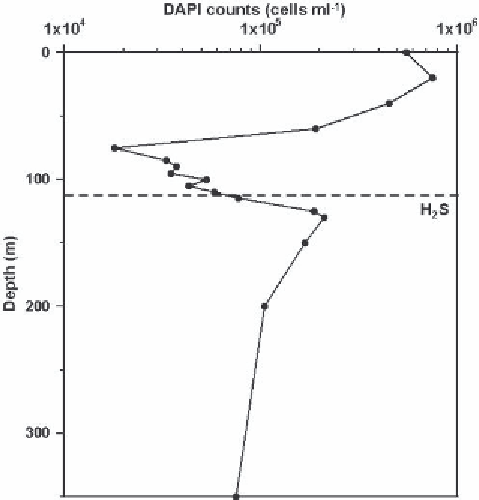Environmental Engineering Reference
In-Depth Information
cells ml
−
1
10
5
at the oxic/anoxic interface [25, 39,
53]. Bird and Karl [4] direct microscopic and total ATP measurements made
in spring during R/V Knorr cruise in 1998 gave much lower values than all
previous measurements. No local maximum of bacterial cell densities at or
below the interface was observed. We suppose that the number and biomass
of bacteria in the Black Sea redox zone are subjected to seasonal variability
controlled by phytoplankton production in the oxic zone and CIL formation
(replenishment) by convective mixing during winter and early spring, when
Bird and Karl performed their studies. The total number of bacterioplankton at
depths below 250-300 m is in the range of (1.0-1.5)
and increase to (1.5-5.5)
×
10
5
cells ml
−
1
[52].
×
Figure 1.
Typical distribution of total number of bacteria in the open Black Sea. Here and
in the following figures the horizontal dashed line shows the upper sulfide boundary (Station
position 44˚20.23'N, 32˚09.54'E, depth 1998 m; average data are from cruises in May 1998, in
May 1997, and in August 1995).
4. DARK CO
2
FIXATION RATES AS AN INDICATOR
OF MICROBIAL ACTIVITY
A radioisotopic technique with
14
C-bicarbonate was used for studying the
activity of the microbial community at the oxic/anoxic interface. Many studies
demonstrated a sharp increase in the rate of dark carbon dioxide fixation in the

